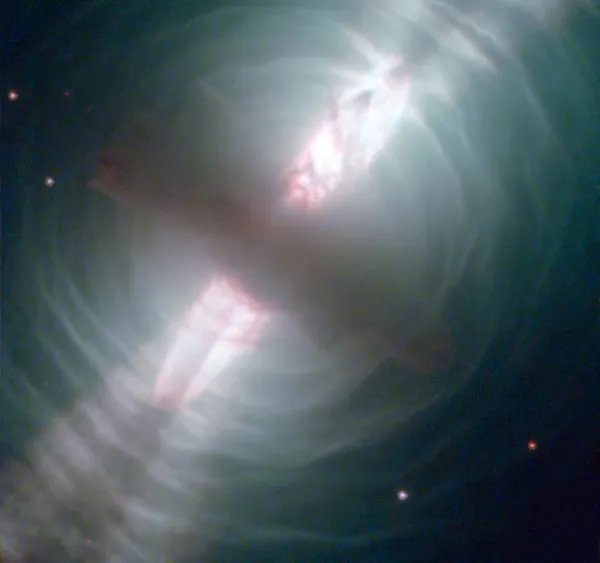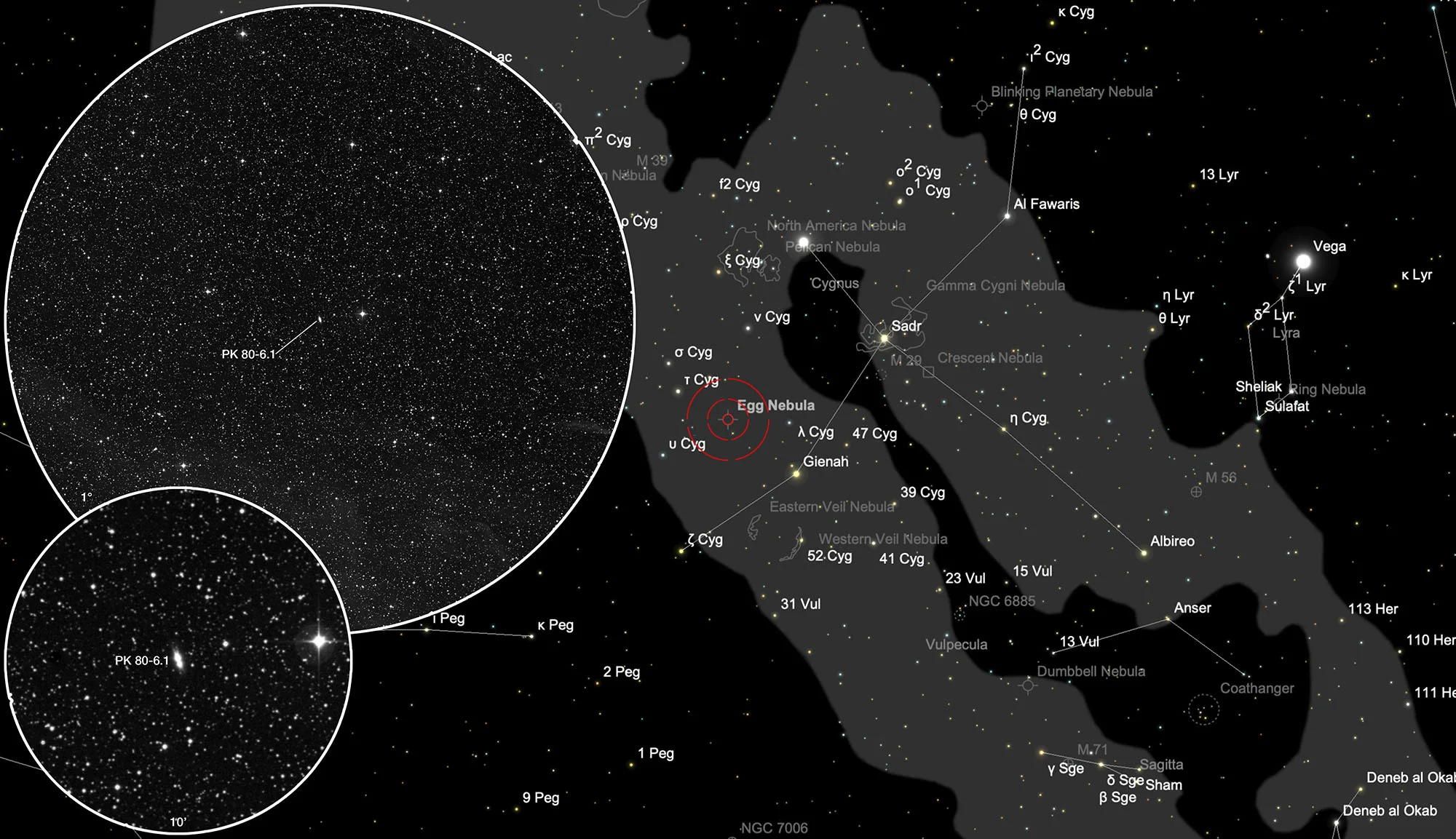Egg Nebula (CRL 2688)

History
During the Air Force Cambridge Research Laboratory (AFCRL) Rocket Surveys, Price and Walker discovered a strong infrared emission from object CRL 2688 (AF 803-2935) in 1974. Martin Cohen identified this infrared source with an oval nebula on the photo plates of the «Palomar Observatory Sky Survey» (POSS). E. P. Ney coined the nickname "Egg Nebula" (Egg Nebula) in an article in the January 1975 issue of «Sky & Telescope». Other common names are V1610 Cygni, which refers to the variable star. [340, 341]
In Fritz Zwicky's 1971 «Catalog of selected compact galaxies and of post-eruptive galaxies» the object is listed at position IV Zw 067 with the comment «Pair of blue fuzzy oval compacts». This supposed galaxy made it into the Uppsala General Catalog published in 1973 as UGC 11668 and as PGC 3097220 and PGC 3099128 in the HyperLEDA database with a hypothetical escape speed of 2550±20 km/s. [134, 342]
In the 2001 edition of Kohoutek's «Catalog of Galactic Planetary Nebulae» the nebula is still listed in Table 5 for «Possible pre-Planetary Nebulae» as CRL 2688. The designation PK 80-6.1 is not mentioned there and came later. [146]

Physical Properties
This object is a post-AGB star (AGB = asymptotic giant branch), i. e. a star with 0.6 to 10 solar masses that is in a very late development phase or a preplanetary nebula. This is a very brief stage in stellar evolution and only lasts a few thousand years. The hot remains of the star in the centre heat up the surrounding gas and make it glow. Since such proto-planetary nebulae only last a very short time and are very faint, not many have been discovered yet. V1610 Cygni was the first such discovery.
The central star is hidden behind a thick cloud of dust. Four rays shine through the nebula like searchlights. It is believed that jets emerging from the star cut ring-shaped holes in the otherwise impenetrable cocoon of dust, from which light can now escape. How this can come about is still unclear. It is believed that in the centre there could be a binary system instead of a single star. The onion-skin-like structure of the diffuse nebula surrounding the central cocoon was created by periodic ejections of material from the dying star. Such ejections typically occur every few hundred years.
The distance from planetary nebulae is generally difficult to determine. It is estimated that V1610 Cygni is about 3000 light years away from us. [343]
| Name | CRL 2688 |
| Object Type | Post-AGB Star |
| Right Ascension (J2000.0) | 21h 02m 18s |
| Declination (J2000.0) | +36° 41' 37" |
| Spectral type | F5Iae |
| Angular size | 0.562' × 0.389' |
| Identifiers | AAVSO 2058+36; EQ J2102+3641; GSC 02713-01972; IRAS R21003+3629; JCMTSE J210218.9+364138; JCMTSF J210218.9+364138; NAME Cygnus Egg; NAME Egg Nebula; NAME the Egg; PK 080-06 1; PN G080.1-06.5; RAFGL 2688; SV* SVS 2255; UGC 11668; V* V1610 Cyg; ZW IV 67; [C75b] 33; [KW97] 54-39; [LFO93] 2100+36 |
Finder Chart
The Egg Nebula is located in the constellation Cygnus. On 6 August it is in opposition to the Sun and crosses the meridian at local midnight. The best time to watch is April to January, when it is highest at night.
